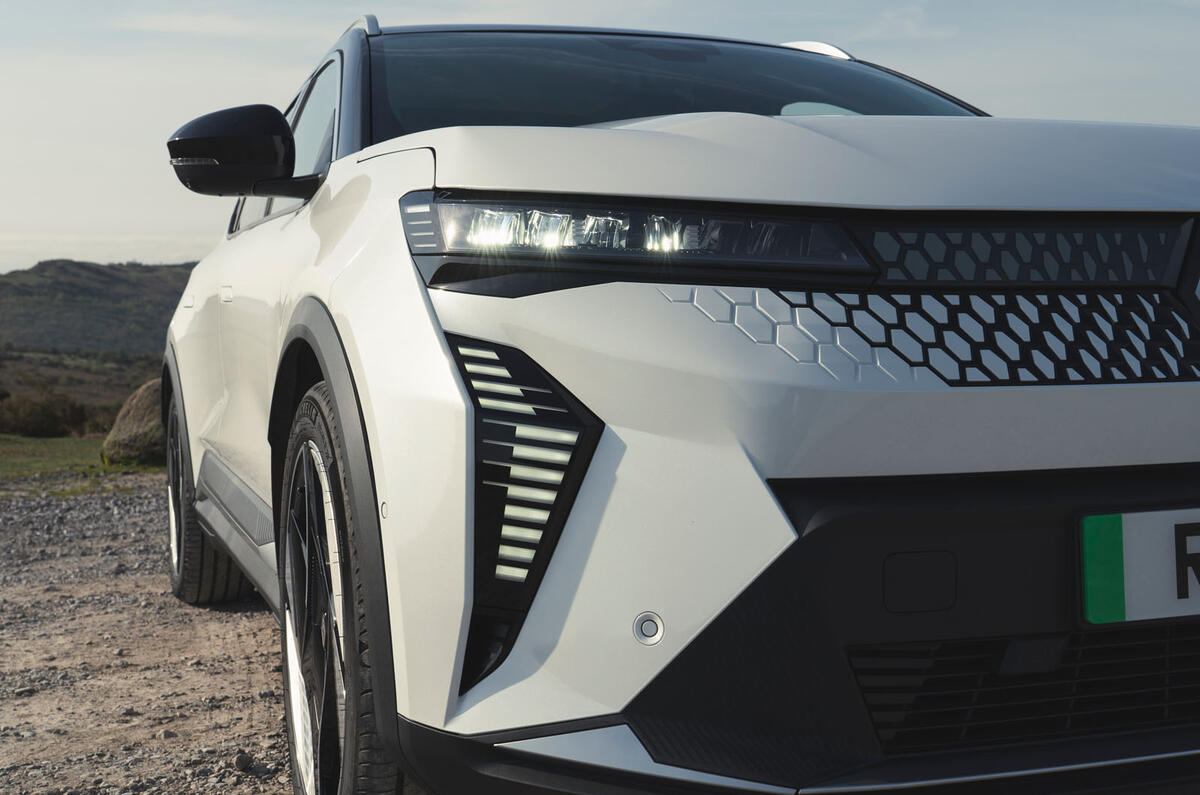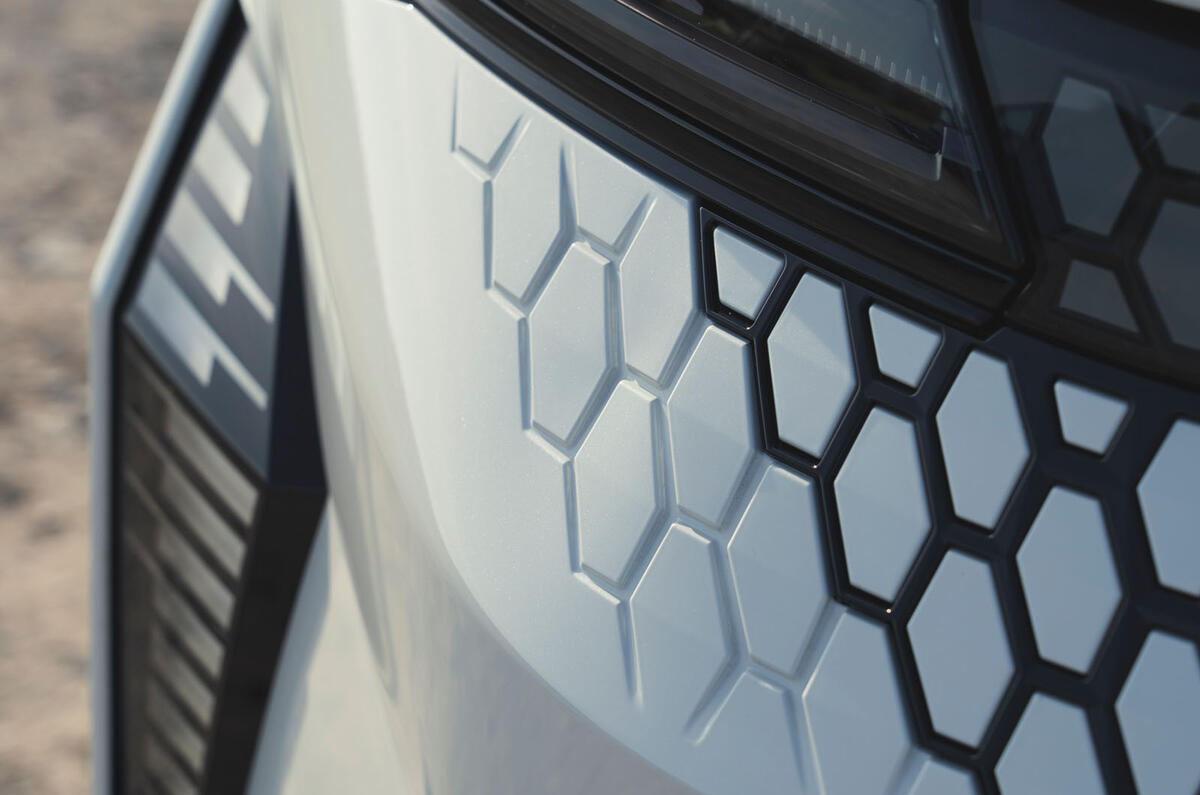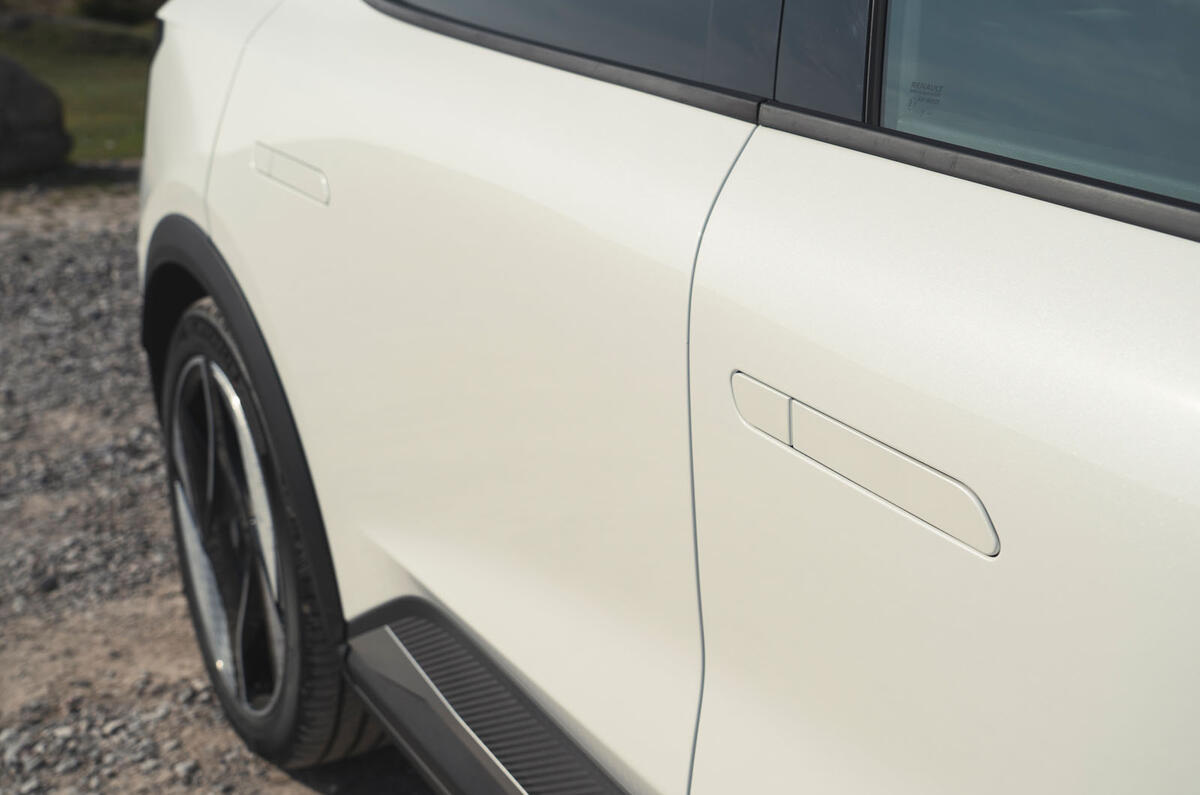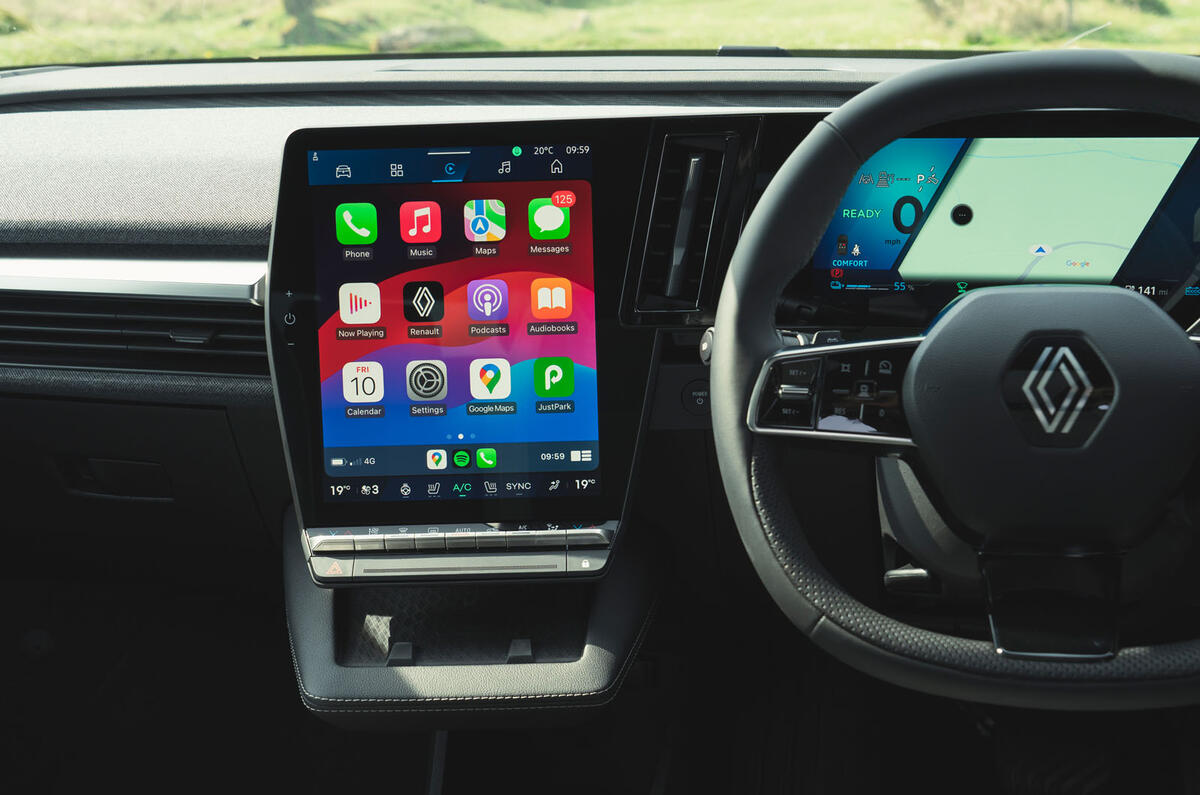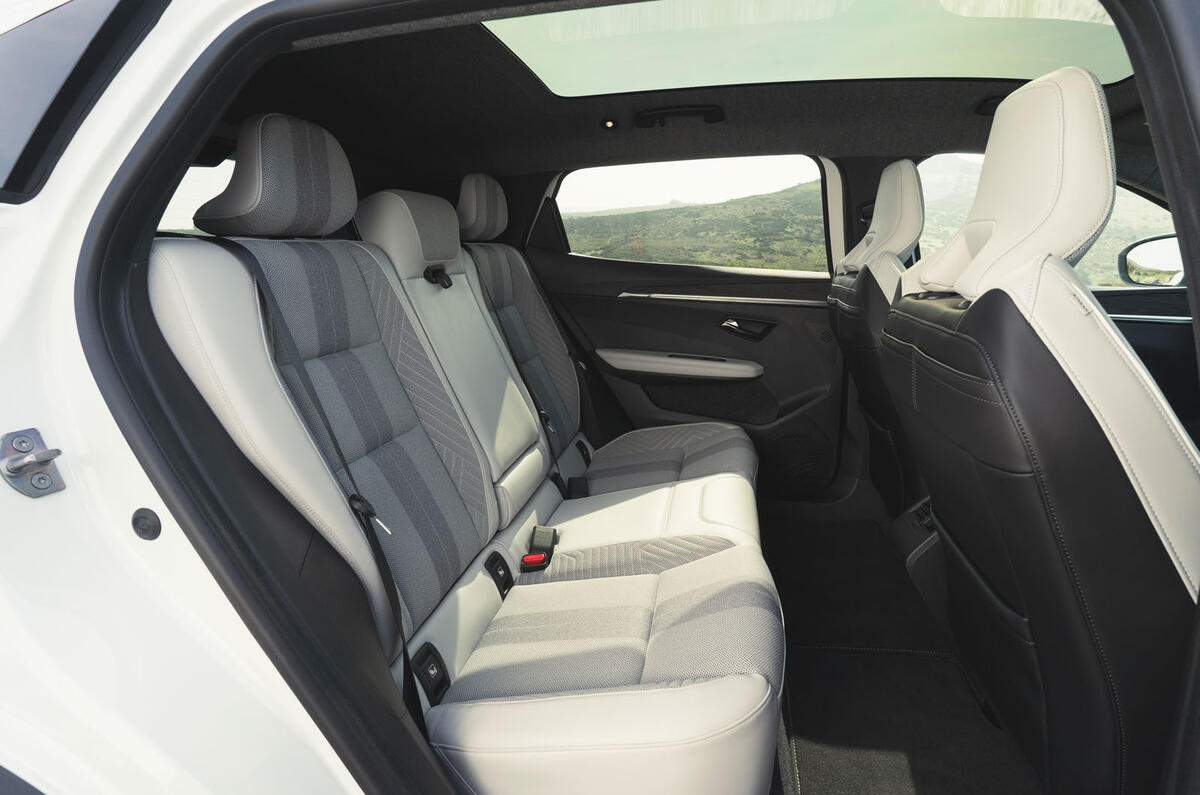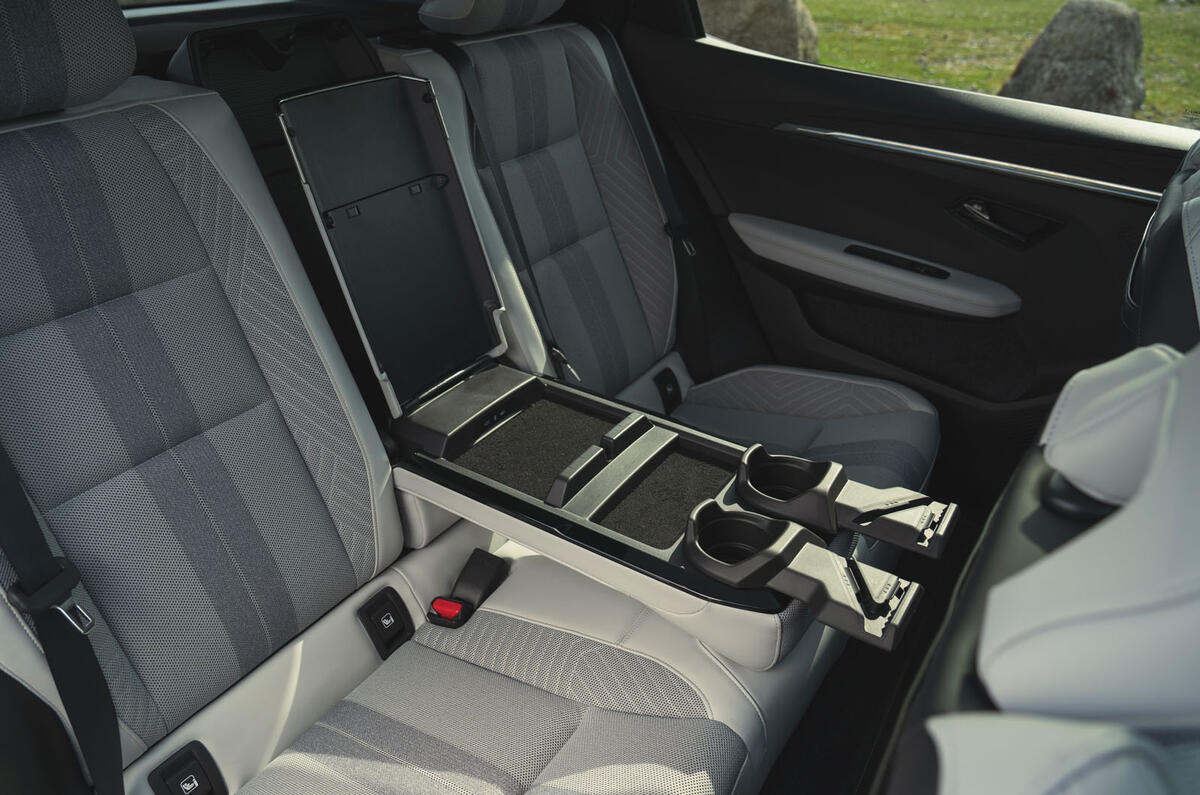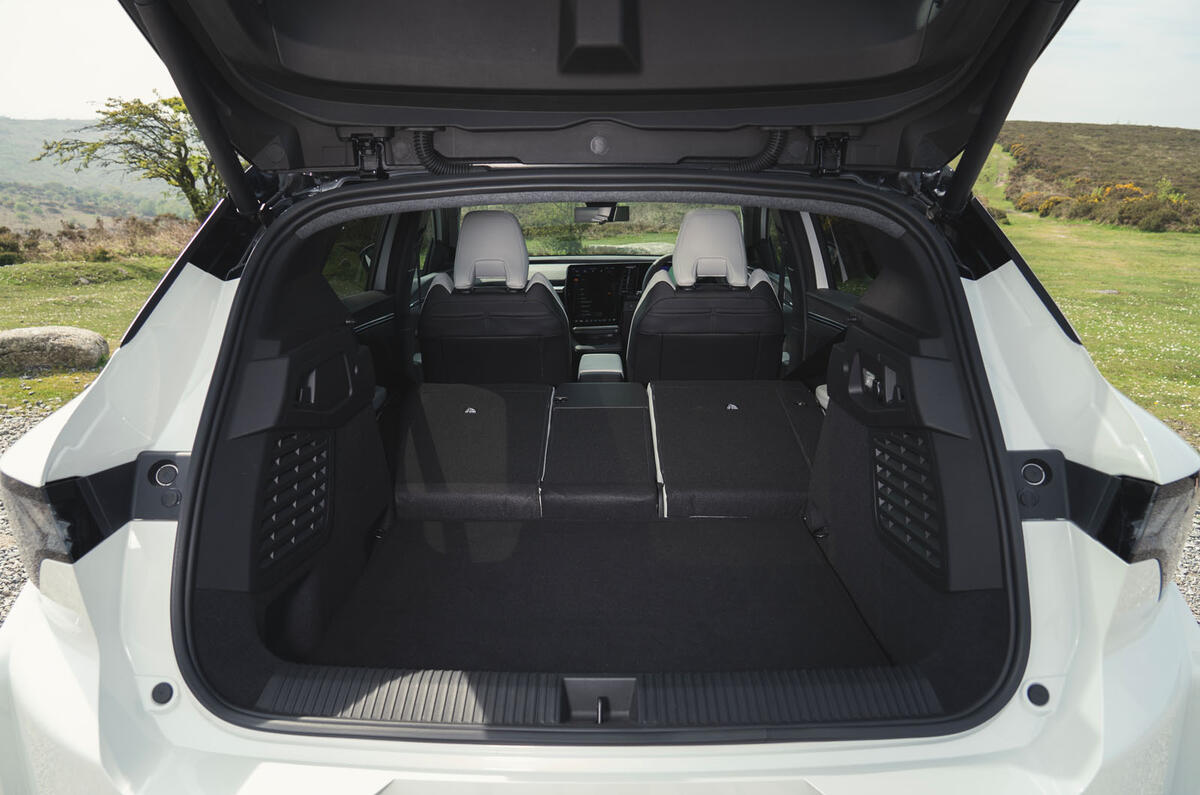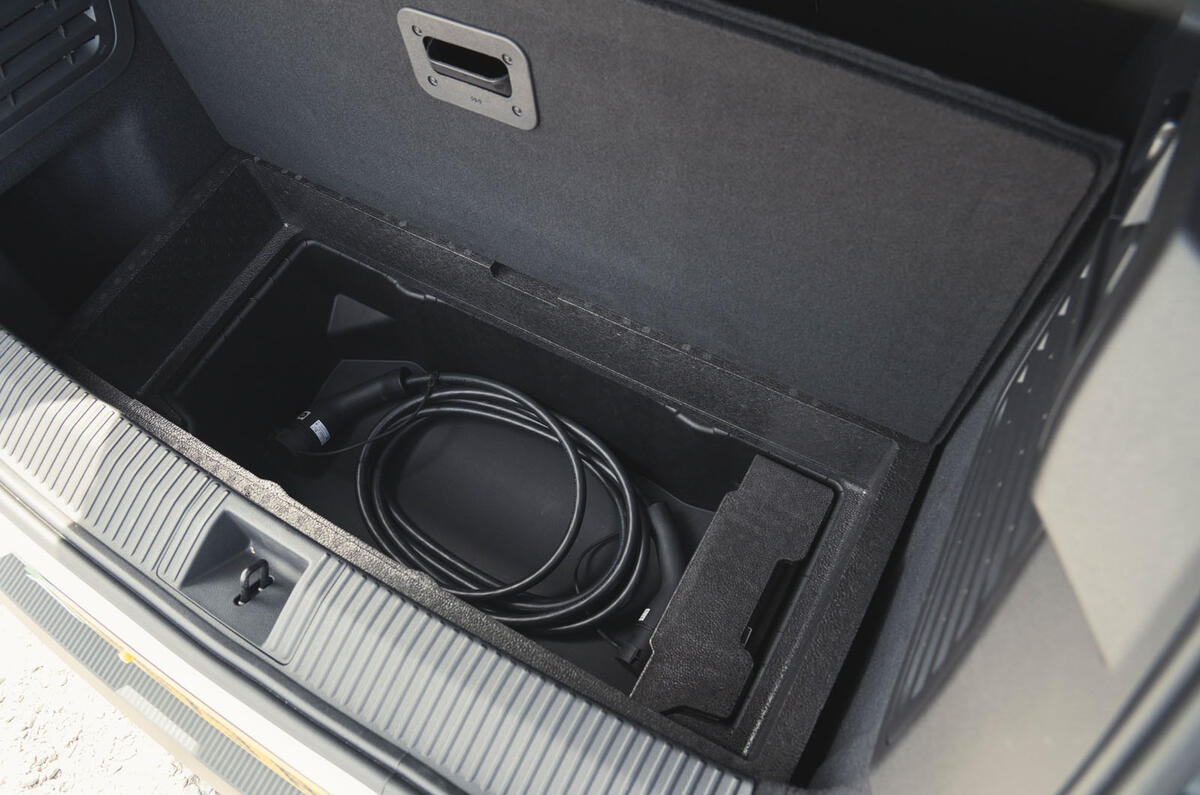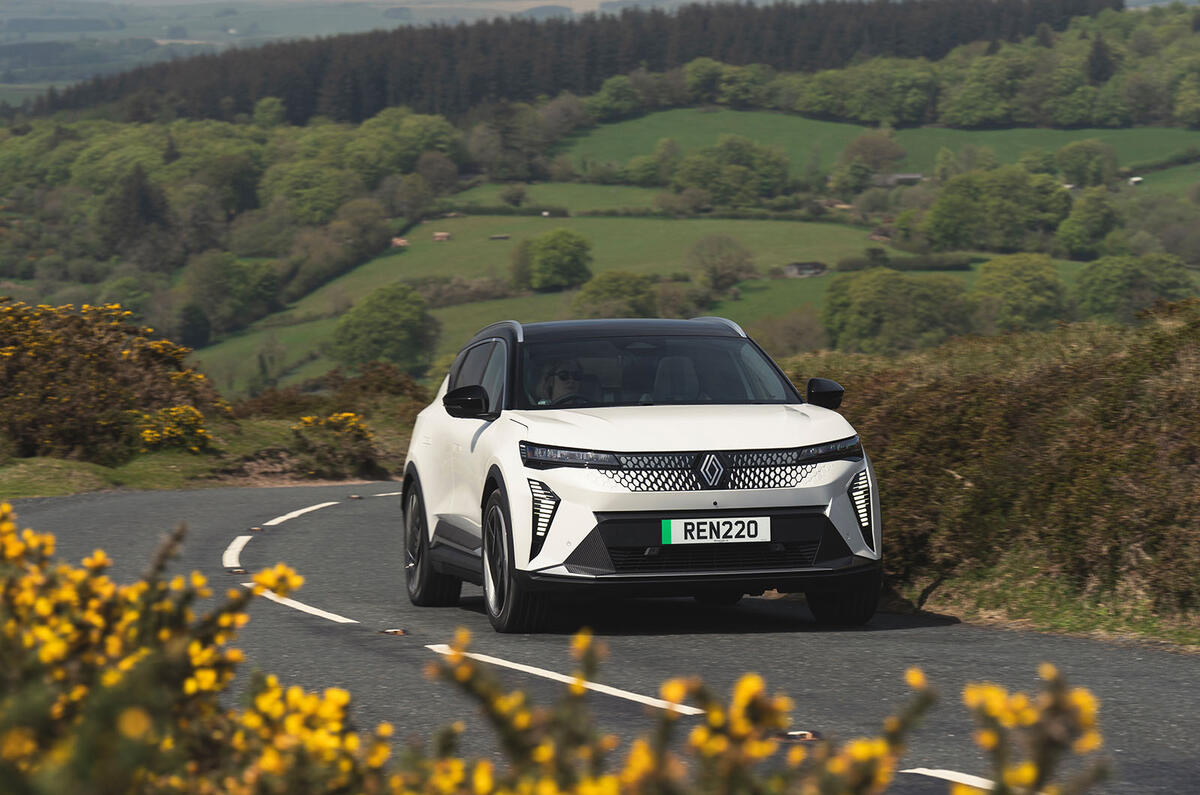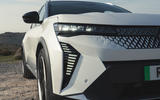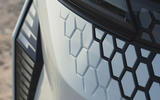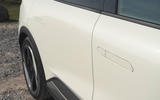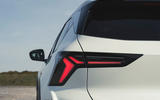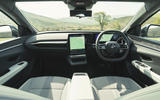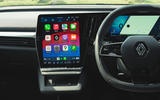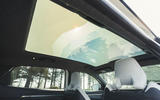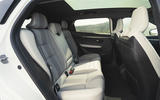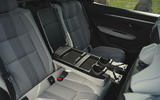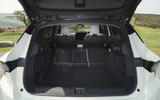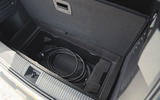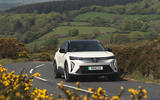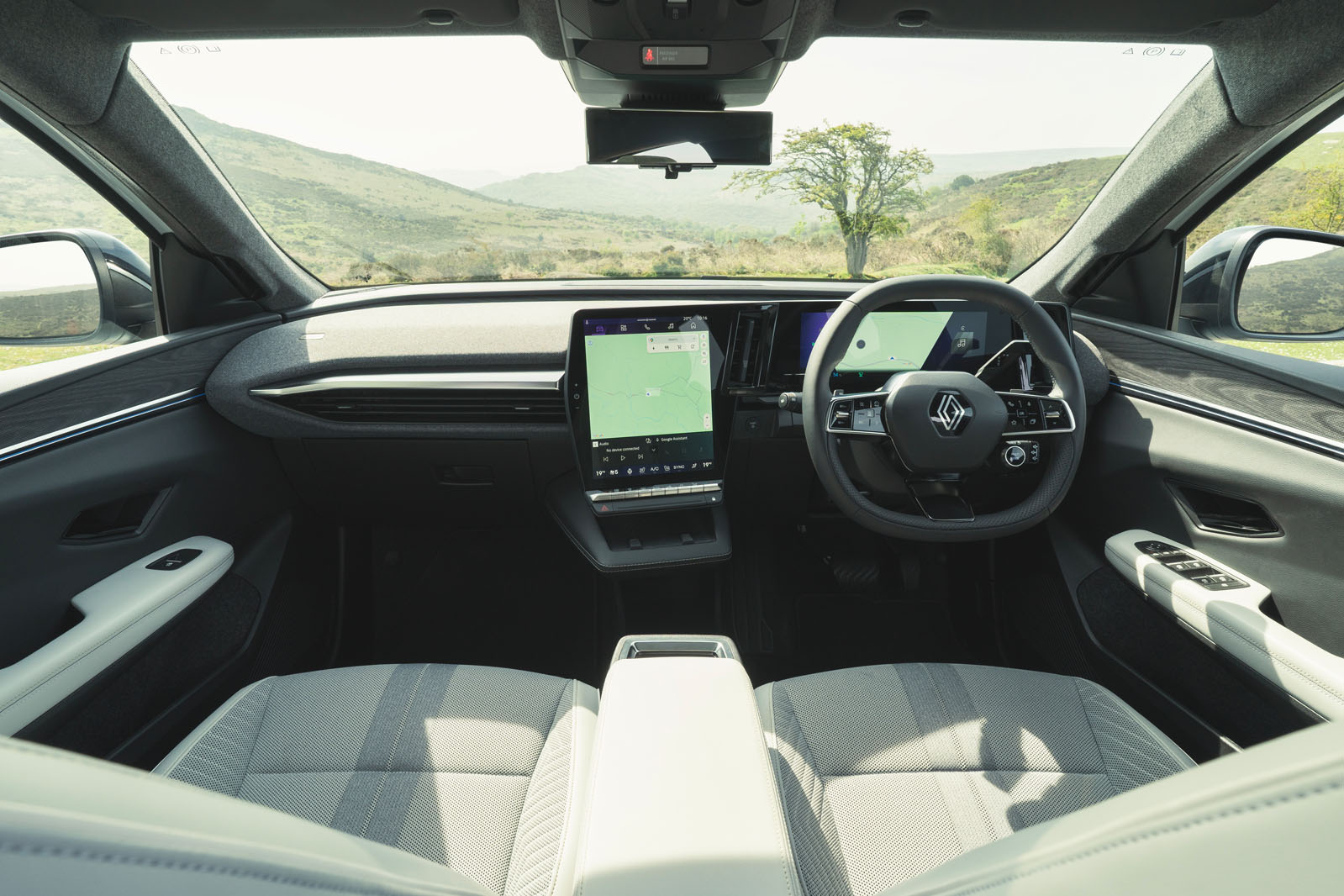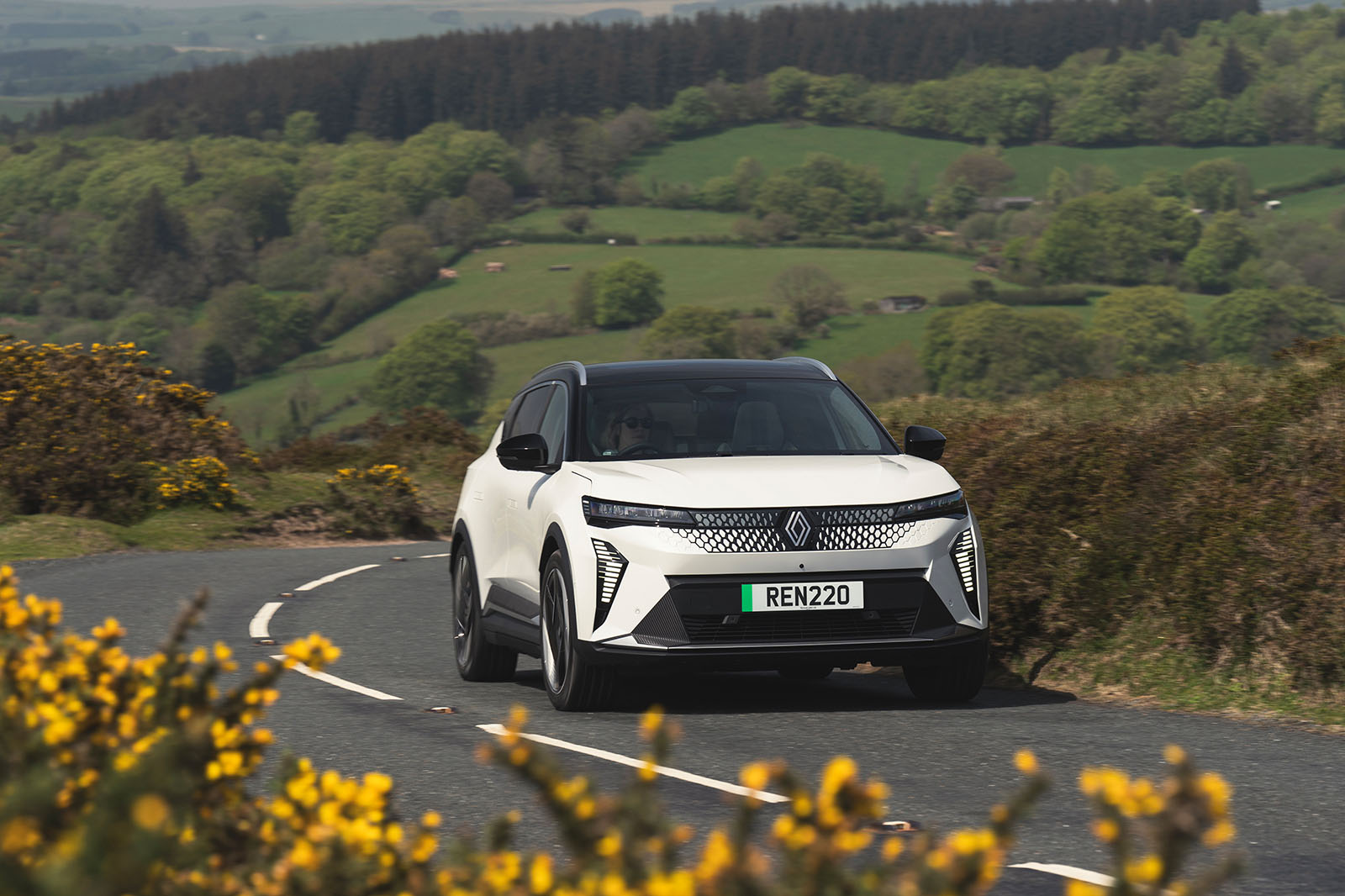When it comes to interior design, Renault’s recent efforts have moved far beyond the vaguely plasticky, grayscale creations of the not-so-distant past. The Scenic E-Tech is another example of the brand’s upward trajectory, with its blend of tactile materials and, in the case of our Iconic-grade car, some brighter hues that along with the panoramic roof bring a commendably bright and warm atmosphere.
The halo feature of the cabin is that roof, which, claims Renault, is the first in a mass-market car that can be fully or partially opacified in segments, thanks to polymer dispersed liquid crystals. It can also be controlled by voice, using the car’s Google Assistant. Perhaps that sounds a touch gimmicky, though the 30mm or so of head room this set-up saves over a mechanical blind is certainly useful.
Elsewhere, the Scenic’s innards show a mixture of clever storage elements and good comfort all round, albeit with some strange ergonomic quirks. The cockpit itself is nicely wrought, with an expensive-feeling quartic steering wheel ahead of you and the large, portrait-oriented central display usefully angled towards the driver. With physical controls for all the important commands and a phone-charging tray floating high above a centre console that offers a large amount of storage space, this cabin does an awful lot right in terms of general usability.
It’s therefore a shame that the digital rear-view mirror looms so large and cuts off a good degree of diagonal forward visibility. (It also prevents you from having the driver’s seat nicely perched up, as many like to set it.) The A-pillars are surprisingly large too, with solid quarterlights. The result is a cabin that feels quite expansive and lounge-like but that doesn’t actually make the car especially easy to drive about town.
Passenger and luggage space are commendable, mind, if not quite among the best in the class. Headroom in the back is MPV-esque (leg room is fine, albeit some way short of what you will find in, say, a Hyundai Ioniq 5) and Renault does in fairness make good on its promise of additional boot space by not having a rear-mounted motor. At 545 litres, the boot is big for a sub-4.5m-long car, and there is generous underfloor storage for cables and the like.
However, that floor is also rather a long way down from the boot lip, which leaves a substantial step up to the backs of the rear seats when they are folded down. Note also that there is no option of individually adjusting the position of second-row seats – a Scenic calling card of yesteryear.
Multimedia system
The Scenic E-Tech’s 12in touchscreen is responsive, crisp and a good deal easier to use than many others because of the way it’s angled towards the driver. The main climate controls also take the form of physical toggles that line up along the base of the display in an arrangement that gets a thumbs up from us for its fundamental eyes-still-on- the-road usability.
The software is Renault’s OpenR Link system. It offers more than 50 apps available from Google Play, though one of the most helpful is simply Google Maps, which is furnished with charge-related data from the car and can pre-condition the battery before a charging stop. The software even uses weather information to accurately estimate the remaining range.
The 410W Harman Kardon sound system in our test car offered well-defined reproduction by class standards.


